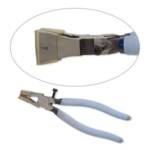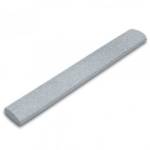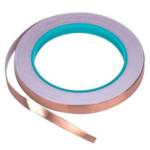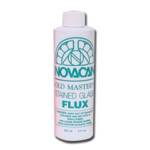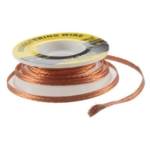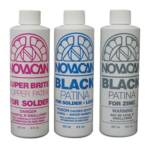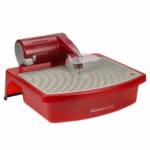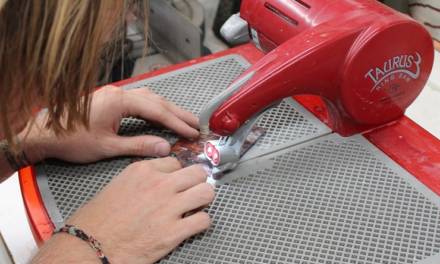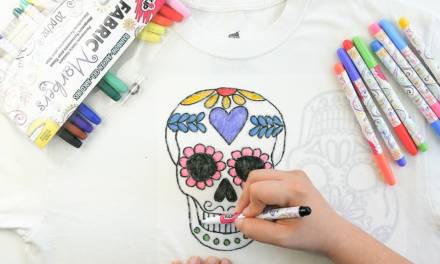If you are new to the world of stained glass art and interested in learning, this beginners guide to stained glass tools will walk you through everything you need to have to get started. Stained glass art can seem intimidating but with a little practice, you will be creating amazing glass art in no time. The tools needed for stained glass are usually easy to find and relatively inexpensive.
Beginners can get started making stained glass art with minimal initial investment but if you have professional aspirations, it can certainly be pricey getting fully equipped and capable of making more intricate pieces or a large volume. There are also many kits out there that contain all of the tools necessary to get started. This can be convenient for the beginner but be mindful they are often bundled with inferior tools.
Stained glass is a fun activity for people of all ages and can also be a great group activity. Standing around a large craft table of family and friends creating stained glass art, sharing tools and tips, is a great way to enjoy the art of stained glass. Now let me tell you about all of the materials and stained glass tools you need to get started.
Complete Tool List for Stained Glass Art
There are many tools used in the process of making stained glass. Beginners making smaller less intricate pieces will not need all of the tools a professional will need. That said, It is a good idea to start with the basic tools used for stained glass and add more as you find yourself reaching your limitations in what you can create.
The more specialized tools will allow you to be more efficient as well improve your capabilities of what you will be able to create. You will typically find yourself in need of more specialized tools when you start creating intricate patterns, high volumes of pieces, or larger three-dimensional stained glass using lead came.
Basic Stained Glass Tools Needed to Get Started
These are the basic tools everyone wanting to create stain glass art will need. Some of which you may already own or can be improvised by something you already own. If you do not own the necessary tools you will have a difficult time creating.
Safety Wear
Safety glasses and gloves should always be worn when working with glass. When cutting glass you can create very sharp edges which can cut extremely easily. Safety glasses should be worn to protect you eyes from glass shards that may pop off when breaking glasses pieces that you cut. Both will also provide great protection while soldering as well.Glass Oil Cutter
A glass cutter allows you to make a shallow score in the glass piece which allows you break the glass along the score line. There are a few popular brands like Toyo, Studio Pro, and Fletcher and are made in a variety of styles. The pistol grip glass cutter is held just as the name suggests and a comfort/pencil grip is held like a pencil of course.
I advise against getting one from a hardware store and instead choosing know for working well with stained glass as it will give you better results. Toyo has great glass cutters in both the pistol grip and pencil grip form that are both quality and durable. Novacan makes oil to fill the cutter with which provides lubrication but if you are out and need to improvise, kerosene, 3 in 1 oil, or any light oil can work well.
Running Pliers
This is an invaluable tool for glass cutting that is heavily relied upon. Running pliers open score lines using even pressure acting as a fulcrum by putting pressure on both sides of the scoreline. They usually have an adjustable screw which accommodates different glass thicknesses. They are usually equipped with a rubber tip to protect the glass during use and are good for straight, slightly curved cuts, and for big sheets. An extremely useful tool no one should be without.
Breaking/Grozing Pliers
Breaking pliers are also used to break the glass but in a different way than running pliers. Grozing is the removal of nibs of glass with the serrated edges of the pliers’ jaws. Running pliers are better at nibbling on curved cuts but breaking pliers can also come in handy in other areas. Here is great article on cutting glass and demonstrating both running and breaking pliers in action.
Carborundum/Scythe Stone
This tool is used to smooth glass edges after cutting, both for safety and to allow for the even application of the copper foil around the edges. This is also known as a sharpening stone which used in sharpening knives and other metal had tools.
Copper Foiling/Fid Tool
A copper foiling tool or fid tools is essentially a burnishing tool which is used to press the foil down onto the glass and ensure full contact. It will eliminate any gaps between the glass and the foil which is essential for creating good soldering joint between glass pieces. There are many different ways to improvise this tool, one of which is chopsticks, as an alternative to purchasing one.
Copper Foil
Copper foil tape is applied to the edge of the glass pieces. The foil is what allows the solder to bond two or more pieces of glass together. Copper foil is a quick and easy way to start creating beautiful stained glass for beginners. Beginners should start with standard 1/4″ copper foil.
Glass Came
Came is another material and method of creating stained glass work. It can be made of many different materials but lead is most common. Came is used in larger geometric or 3D pieces and those that may be exposed to the elements. Larger pieces that require additional support and structure will typically require came instead of copper foil.Flux and Flux Brush
Flux serves many purposes when it is applied with a brush to the metal pieces you intend to join with solder. It acts as a cleaning agent which removes any oxidation on the metal to provide better contact, it helps the solder solder flow better, and finally it seals out any air preventing further oxidation of the solder join. All of this ensures a long lasting secure bonding of two metal pieces. This Novacan Flux works great.Solder
Solder is the what is used to bond the two glass pieces together by melting it onto the copper foiling. There isn’t much to solder but it is a good idea to make sure you use a quality, pure 60/40 solder for your stained glass projects. This means it is 60% tin and 40% lead which provides a solid bond of two metal pieces.Solder Remover
Solder removers come in the form of a solder sucker or braided copper and they can remove excessive solder. It is especially handy if you need to disassemble pieces for repairs or any other reasons you may need to remove the solder from a joint. It makes the process quick and easy. Solder suckers work best for removing solder beads while the braid will work best for solder that is spread out or not easily removed by the sucker.Soldering Iron
Soldering irons come on many different styles and power ratings. This Weller 100PG is a popular pencil style choice for stained glass as it is powerful and durable. For more options and to learn more check out this great article on the best soldering irons for stained glass.
Stained Glass Patina
After you have finished soldering you stained glass art you will need to apply patina to the soldering joints to give a finished look in either a black or copper look. Patina will give the solder joints an even and consistent finish. Novacan black patina works wonderfully and can also be had in a copper finish as well.
Aside from the tools and accessories listed above, you will also need various other items like a pens, markers/dry erase markers, scissors, rulers, masking tape, and spare sheets of paper. All of these items will make the projects move along much quicker and more efficiently.
Specialized Stained Glass Tools
When you have learned to make more detailed designs you will probably decide to start investing in specialized tools used in stained glass making. In some cases, these specialized tools can speed up the job, and in others, it is less about time-saving and more about making the task easier and efficient.
It is important to note these tools are usually pricey and often take up valuable studio space. Consider this when you start deciding on adding glass grinders, glass saws, and cutting systems to your stained glass tool collection. In most cases, however, these are all costs well worth the benefit they will bring to the avid glass artist.
Glass Cutting System
Glass cutting systems like the Beetle Bit Mini (a great system for beginners) are really useful in making extremely precise scoring of your glass pieces. Cutting systems are essentially an articulating arm attached to a bar that you anchor to your craft table and often feature a grid-like platform which you rest the glass onto. The arm up and down the arm as well as providing full articulation of the attached cutter.
This system allows you to make very precise scores, whether freehand or guided by your traced template, into the glass pieces while also making the act of doing so more comfortable. This is especially handy if you find yourself scoring straight lines into large pieces of glass as it allows you to make perfectly straight lines.
Glass Saw
Stained glass saws are available in two different types which include glass ring saws, which are most popular, and glass band saws which are usually pricier and and not unlike those used in woodworking. Ring saws get their name from the ring shaped “blade” it uses to cut glass which is also round in shape which allows cutting action in all directions of the blade, making it quite versatile.
Band saws, on the other hand, operate exactly like the woodworking counterpart. The difference is the blade used is especially suited for glass cutting. The benefit of a band saw is the ability to change out the blade to cut other materials like wood or metal used in stained glass frames or brass came. Here is a useful guide on finding the best stained glass saws.
Glass Grinder
Another very useful tool for the stained glass artist is a glass grinder. Glass grinders are very useful to the professional artist doing high volumes of work as it makes quick work of rough glass edges that need smoothing. It is also great at removing excess glass material that you aren’t quite able to remove with you cutter or running/breaking pliers.
Stained glass grinders certainly aren’t limited to professionals and are usually first specialized tool purchased by hobbyists. Check out this list of the best stained glass grinders and buyer’s guide for even more information.
Copper Foiling Machine
A copper foiling machine used in stained glass like this Glasstar foiler, is certainly not a necessary or required tool but its one that certainly makes things easier and speedier. The device is essentially a copper foil dispenser that you load you foil rolls onto. When you are ready to start foiling your glass pieces all you do is slide the glass edges on the roller that contains the copper foil. A great time-saving tool for sure and.
Most of the tools mentioned here can be purchased at any popular hobby store and are readily available online. A great motto is to think of your purchases as investments. Buying quality tools will usually ensure they outlast the cheaper alternatives and perform better as well. If you have any suggestions for us please leave a comment.
Good luck in beginning your journey into such a fun and gratifying craft!





